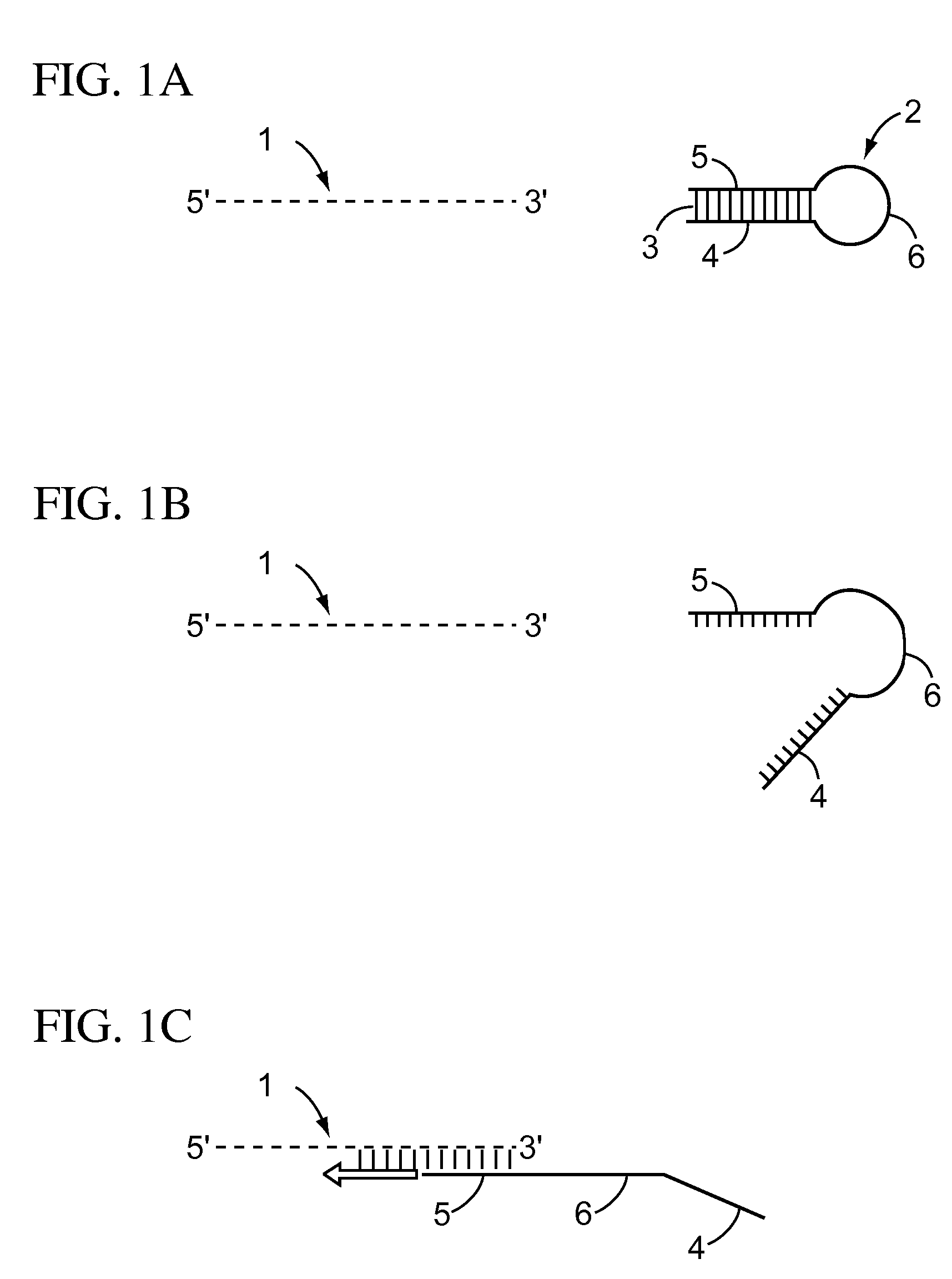Hot start reverse transcription by primer design
a technology of reverse transcription and primer extension, which is applied in the field of hot-start reverse transcription by primer extension, can solve the problems of difficult application of hot-start reverse transcription methods and compromise of the integrity of primer-mediated methods of synthesizing nucleic acids, and achieve the effect of reducing the formation of primer extension products
- Summary
- Abstract
- Description
- Claims
- Application Information
AI Technical Summary
Benefits of technology
Problems solved by technology
Method used
Image
Examples
example
[0030] An illustrative experiment was performed comprising the primer and probe sequences found in Table 1 below directed to the ACTB messenger RNA. The results of different RT reactions using different RT primers, and reaction temperatures, were quantitated using real-time PCR with a forward primer FP-ACTB (SEQ ID NO:1), a reverse primer RP-ACTB (SEQ ID NO:2), and a TaqMan 5′ nuclease probe Taq-ACTB (SEQ ID NO:7) There were two reverse transcription temperature conditions: a low temperature RT at 20C, and a high temperature RT at 40C. There were six RT reactions compared for each of the two temperature conditions, using the following six conditions.
[0031] 1) RT linear primer (SEQ ID NO:2).
[0032] 2) RT hot start primer with 8 base-pair stem (SEQ ID NO: 5.
[0033]3) RT hot start primer with 10 base-pair stem (SEQ ID NO:4).
[0034] 4) RT hot start primer with 12 base-pair stem (SEQ ID NO:3).
[0035] 5) buffer alone (no RT primer).
[0036] 6) No template control.
SEQ IDOligo NameSequenc...
PUM
| Property | Measurement | Unit |
|---|---|---|
| Electric charge | aaaaa | aaaaa |
| Temperature | aaaaa | aaaaa |
Abstract
Description
Claims
Application Information
 Login to View More
Login to View More - R&D
- Intellectual Property
- Life Sciences
- Materials
- Tech Scout
- Unparalleled Data Quality
- Higher Quality Content
- 60% Fewer Hallucinations
Browse by: Latest US Patents, China's latest patents, Technical Efficacy Thesaurus, Application Domain, Technology Topic, Popular Technical Reports.
© 2025 PatSnap. All rights reserved.Legal|Privacy policy|Modern Slavery Act Transparency Statement|Sitemap|About US| Contact US: help@patsnap.com



